The Super Guppy is a remarkable aircraft, because of its connection to NASA’s space program, its unique shape… and the fact Airbus made some!
The Super Guppy is a memorable aircraft, but many people don’t know its original role. This story takes us back to the early 1960s, way before Airbus even existed. It takes us back to NASA and the space race. And as with all things freighter-related, it’s about logistics. NASA was trying to put humans in space and on the moon, launching them from Cape Canaveral in Florida.

People studying the history of the space race probably know of NASA’s problems in getting its missiles to launch and fly reliably. But the organisation had another, lesser-known problem: getting the gigantic rocket parts to Florida, from the factories that made them! Many of the companies making this hardware were on the American west coast.
Aero Spacelines Super Guppy – Its Origins
Smaller parts could travel by road or rail. But eventually, some parts just got too big. NASA needed something else. Many rocket stages went all the way south to the Panama Canal, and back up north, along the Gulf of Mexico! But eventually, the situation lead to an aircraft. We are of course referring to the Aero Spacelines Super Guppy. You’ll notice we didn’t write ‘Boeing Super Guppy’ there.
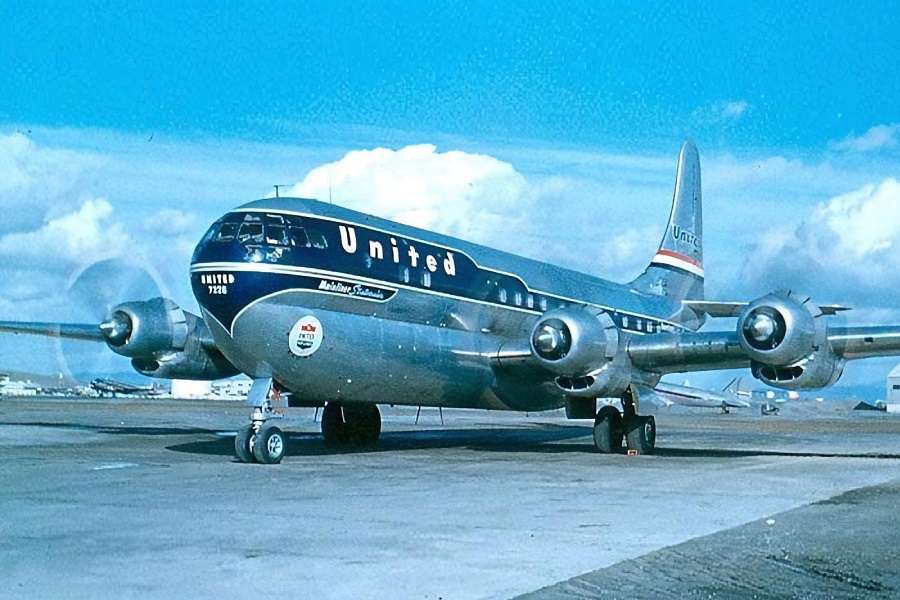
The idea was as outrageous, as it was simple. In 1960, airlines were disposing of their Boeing 377 Stratocruisers. Boeing’s 377 was an early pressurized airliner, essentially the civilian version of the C-97 “Stratofreighter”. In turn, this was a post-war freighter version of the B-29 Superfortress bomber. The 377 Stratocruiser was an impressive and well-received aircraft.
Unfortunately for Boeing, it wasn’t successful. Only 56 377s entered commercial service. Clearly, jets like the 707 were the future, and they were on the way. The military C-97/KC-97s were more successful, but the US Air Force soon wanted to replace them with the new KC-135. Jack Conroy, a former WWII pilot, airline pilot and all-around enterprising individual, got an idea.
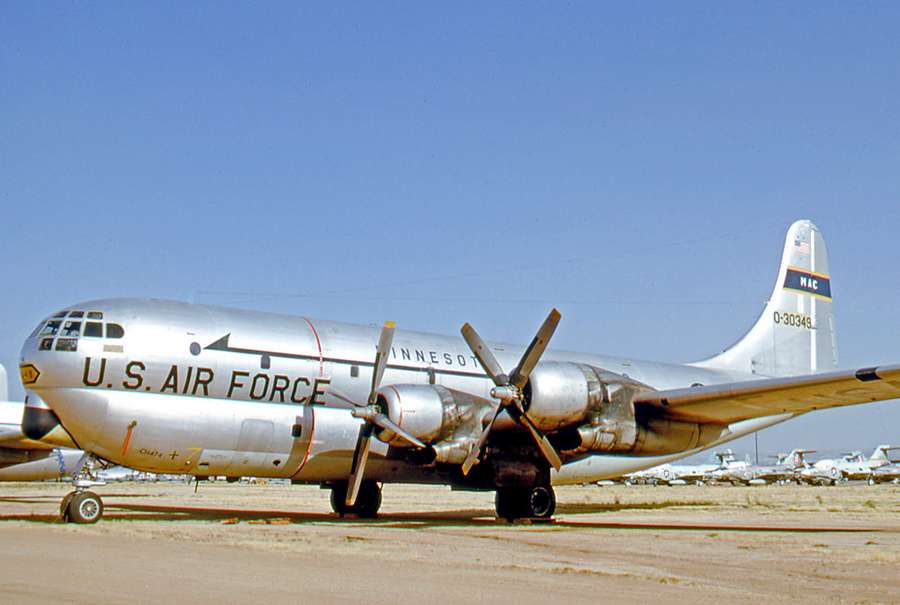
Conroy would use ultra-cheap Boeing 377 Stratocruisers, to build an outsize transport plane. This was “The Pregnant Guppy”, the Super Guppy’s precursor. Making this modification wasn’t easy, but this was the 50s and 60s. The pace with which aviation was evolving back then, is nothing like what we know today.
Building The First Plane
The Pregnant Guppy mostly used the airframe of an ex-PanAm 377 Stratocruiser. To stretch it, more parts came from a British Overseas Airways Corp (BOAC) 377. These aircraft parts came from an aircraft broker in California, who had been collecting retired Stratocruisers! Unlike the future Super Guppy, this first jet kept the radial piston engines. The wing and the control surfaces were largely unchanged. But of course, the upper fuselage underwent a transformation.

A normal 377 Stratocruiser has a ‘double-bubble’ appearance. In other words, the fuselage isn’t a perfect cylinder; a smaller-radius section at the bottom meets the rest of the fuselage on its sides. When the Pregnant Guppy emerged, the transformation had given it a ‘triple bubble’ appearance. Most future Super Guppy aircraft wouldn’t get this feature.
The Pregnant Guppy’s upper section had a diameter of six meters (19,7 feet). To load it, crews would detach the entire tail section of the aircraft completely. Then after loading they would reattach it, connecting and adjusting all electrics and flight controls. This process would change somewhat for the Super Guppy, but it always remained an Achilles heel for the aircraft.

For the first test flight, the 377 fuselage was intact, with the bulbous upper section simply superimposed on it. Even so, legend has it that when the Van Nuys air traffic controllers realized that Jack Conroy and his co-pilot intended to take off for the first time, they alerted the police and fire departments. The flight went ahead uneventfully, but these controllers weren’t alone in being a bit sceptical.
From Pregnant Guppy To Super Guppy
NASA had their reservations about this first plane, too. But the agency would soon change its tune, thanks in part to support from Wernher Von Braun himself. Rocket components generally are very bulky, but relatively light for their size. So, the Pregnant Guppy was ideal for rocket stages in the early days of the space program. Specifically, Conroy sized the aircraft’s fuselage to fit the S-IV, i.e. the second stage of the early Saturn I rocket.
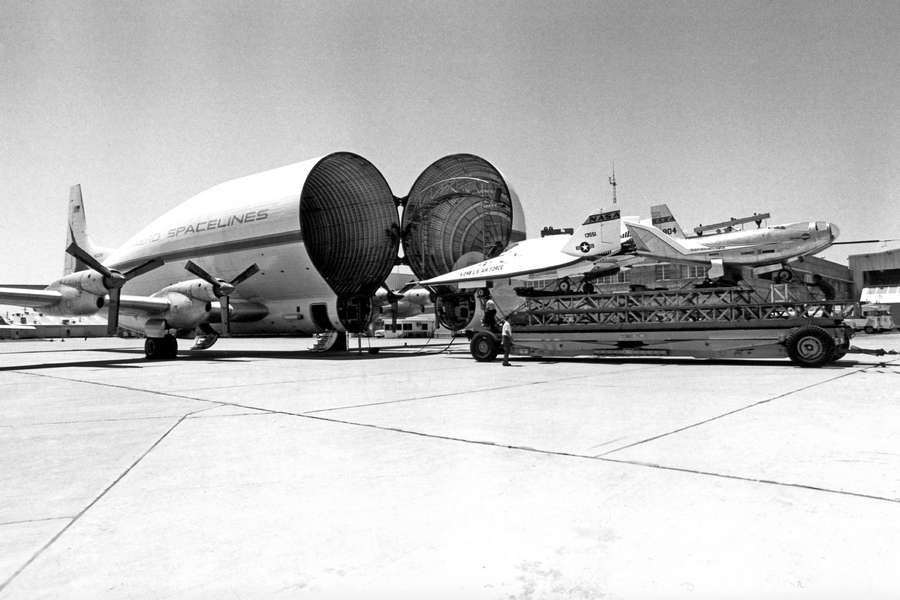
The aircraft became operational in 1963, carrying its first S-IV stage from California to Florida. This was an 18-hour job, instead of the 20-25 days that the barge across the Panama Canal would take – weather-permitting! NASA was super happy with its Pregnant Guppy. But its engineers knew that future rocket parts would be bigger. So Aero Spacelines Inc. (Jack Conroy’s company) built just one Pregnant Guppy, with tail number N1024V.
This is where the Super Guppy comes in. In addition to having a larger fuselage, it also had a front, hinged door. This made loading a bit easier, but it still required disconnecting and re-connecting (AND testing) control cables and wiring. It first flew in August 1965 and had registration N940NS (later N1038V).
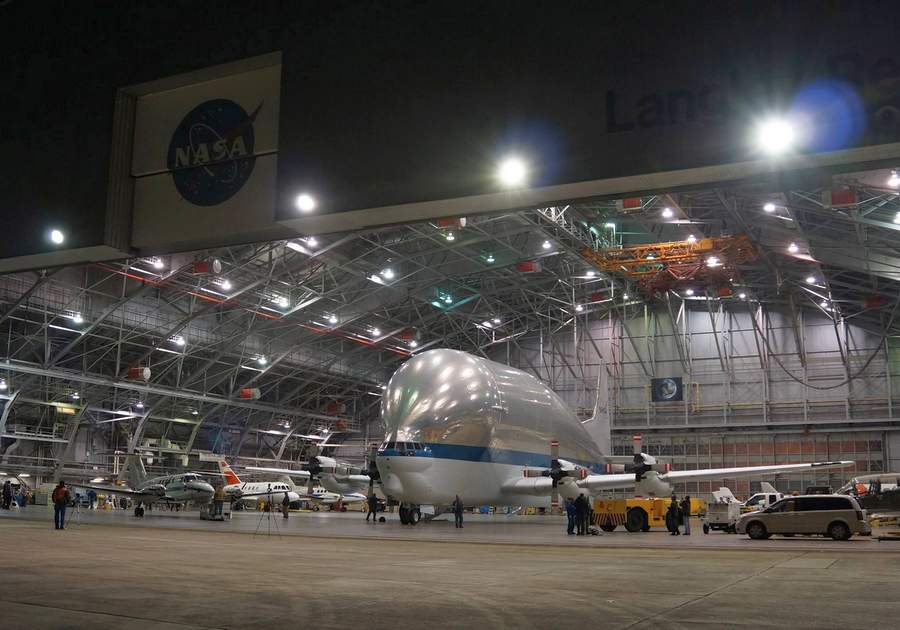
This Super Guppy was the aircraft that would carry most of the large sections of the Saturn V rocket to Cape Kennedy and other NASA sites, with the Pregnant Guppy also in service. But Aero Spacelines Inc. (ASI) believed that there would be more demand for such aircraft. So the company got busy designing a more refined and more capable variant.
Super Guppy Turbine And Airbus
This definitive version is called the Super Guppy Turbine – even though the earlier ‘Super’ version also had turboprop engines. But the SGT had T56 engines, the same type as those on the C-130 Hercules, or the Lockheed Electra and P-3 Orion. The first SGT flew in 1970. And this (finally) is where Airbus comes into this story. Still a new aircraft manufacturer, Airbus originally planned to be just an ASI customer.

The idea was that ASI would operate the aircraft for Airbus. However, this plan would soon change. By this time, ASI (later Tracor Aviation) was in financial trouble. So Airbus would buy one aircraft, with a second as an option. Note here that the Super Guppy Turbine was the first Guppy to have cockpit pressurization, allowing higher cruise altitudes. It was also the first Guppy with type certification as a commercial aircraft. Previous variants had a special US status as “Public Aircraft”.
Airbus took delivery of the first aircraft in 1971. The second one was an option, which the company eventually bought in 1973. Later, the European manufacturer expanded its operations – and its ambitions. So in 1979, Airbus agreed to a deal with ASI that would see it get two more Super Guppy Turbines. But to get them, Airbus would have to make them! Or, have them made in Europe.
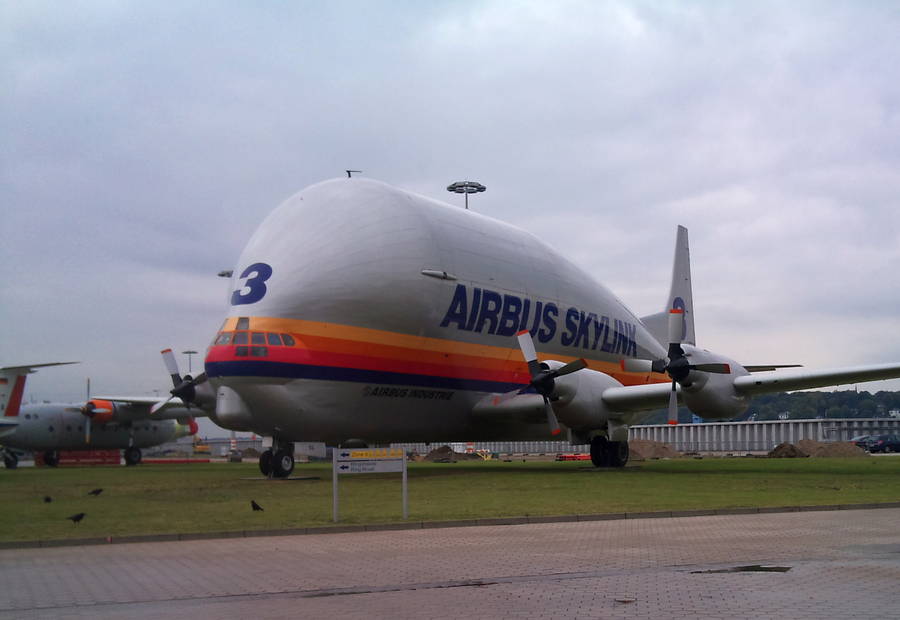
Building The Aircraft In Europe
ASI and its successor did provide Airbus with some sub-assemblies for the aircraft. So is it correct to say that Airbus made them? In theory, yes, because Airbus got the right to produce the aircraft. But oddly, the actual builder of Super Guppy Turbine No3 and No4 was Union de Transports Aériens. UTA is better known today as a former airline, that eventually merged with Air France. But it had a sizeable MRO (maintenance repair overhaul) operation as well.
So UTA was the main subcontractor, for the build of Airbus’ newer two Super Guppy Turbines. Is it then correct to say that Airbus built two “Boeings”? The short answer is “no”. But there is a bit more to it than that. As its design evolved, the Guppy used fewer and fewer parts from the original Boeing 377 Stratocruiser (or the C-97).
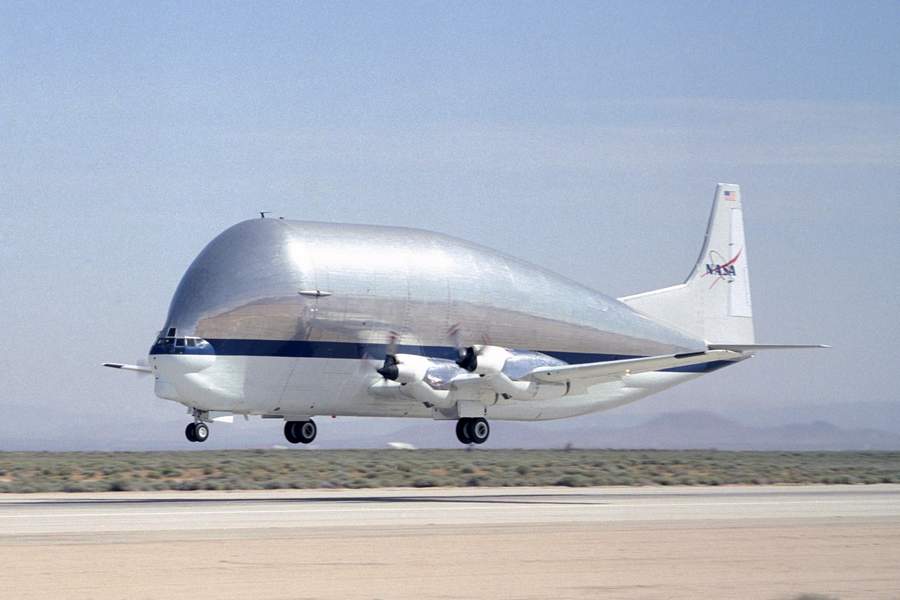
The original Pregnant Guppy and the first Super Guppy retained the lower half of the 377 fuselage. However, the latest ‘SGT’ variant had an all-new fuselage with a simpler cross-section. It lacked the double or triple-bubble appearance. But it had a wider floor. So aside from some key fittings, the Super Guppy Turbine didn’t have a Boeing fuselage.
Lengthy Service – And A “Return” To NASA
However, the SGT still had a Boeing 377 cockpit, the wings, most of the tail and the main landing gear. The nose gear was not from a 377; but it came from a different Boeing, the 707! Airbus may not have made two Boeings, but it got the right to make aircraft with key structural Boeing parts. Ultimately, we could argue that this is a question of grammar. Either Airbus almost made two Boeings, or it made two aircraft that almost were Boeings.
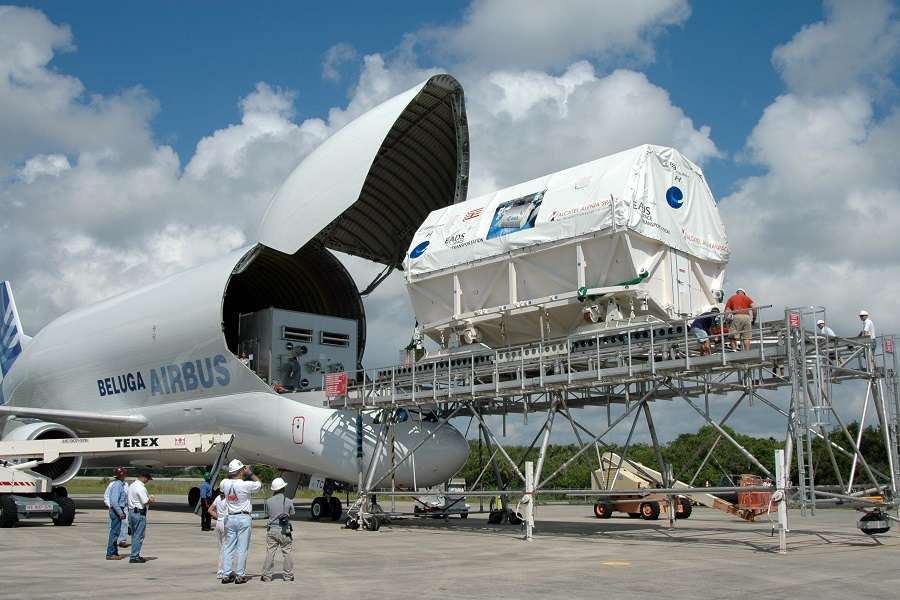
Airbus kept all four Super Guppy Turbines in service until the 1990s. As we have seen, it replaced them with the A300-600ST (super transporter), a design modification of the A300-600R. To most of the world, this is the Airbus Beluga. And somewhat fittingly, it, too, has transported rocket components for NASA and ESA. The first Beluga entered service in 1996.
One of the Airbus-made Super Guppy Turbines is still in service today, with NASA. This is SGT No4, which originally had tail number F-GEAI. NASA bought it in 1997, giving it tail number N941NA. Isn’t it ironic? An aircraft designed to carry rocket parts, but built (in this case) to carry aircraft components, still ended up carrying newer rocket parts…
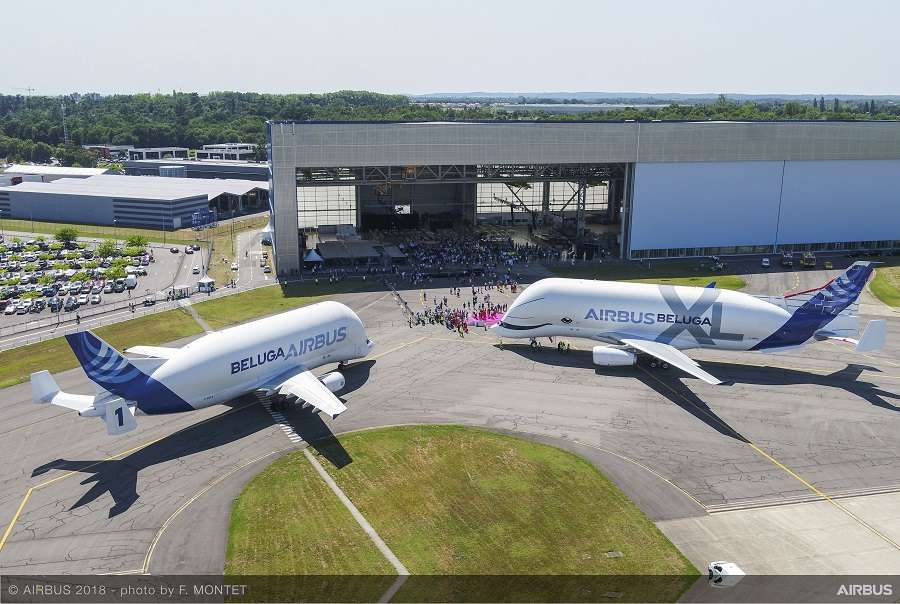
Airbus’ newer Beluga and Beluga XL may be easier to operate, finally eliminating the need to disconnect and reconnect vital flight controls. But the Pregnant Guppy and Super Guppy variants all played their important roles. The earlier aircraft certainly helped NASA reach the moon, solving nightmarish logistical problems. And obviously, they look very cool!




1 comment
scott bywater
Very interesting read and informative. I’d not heard of Airbus and it’s building of pregnant guppie and it’s roots back then and using, with rights, Boeings airframes, well part of it. Quite interesting.